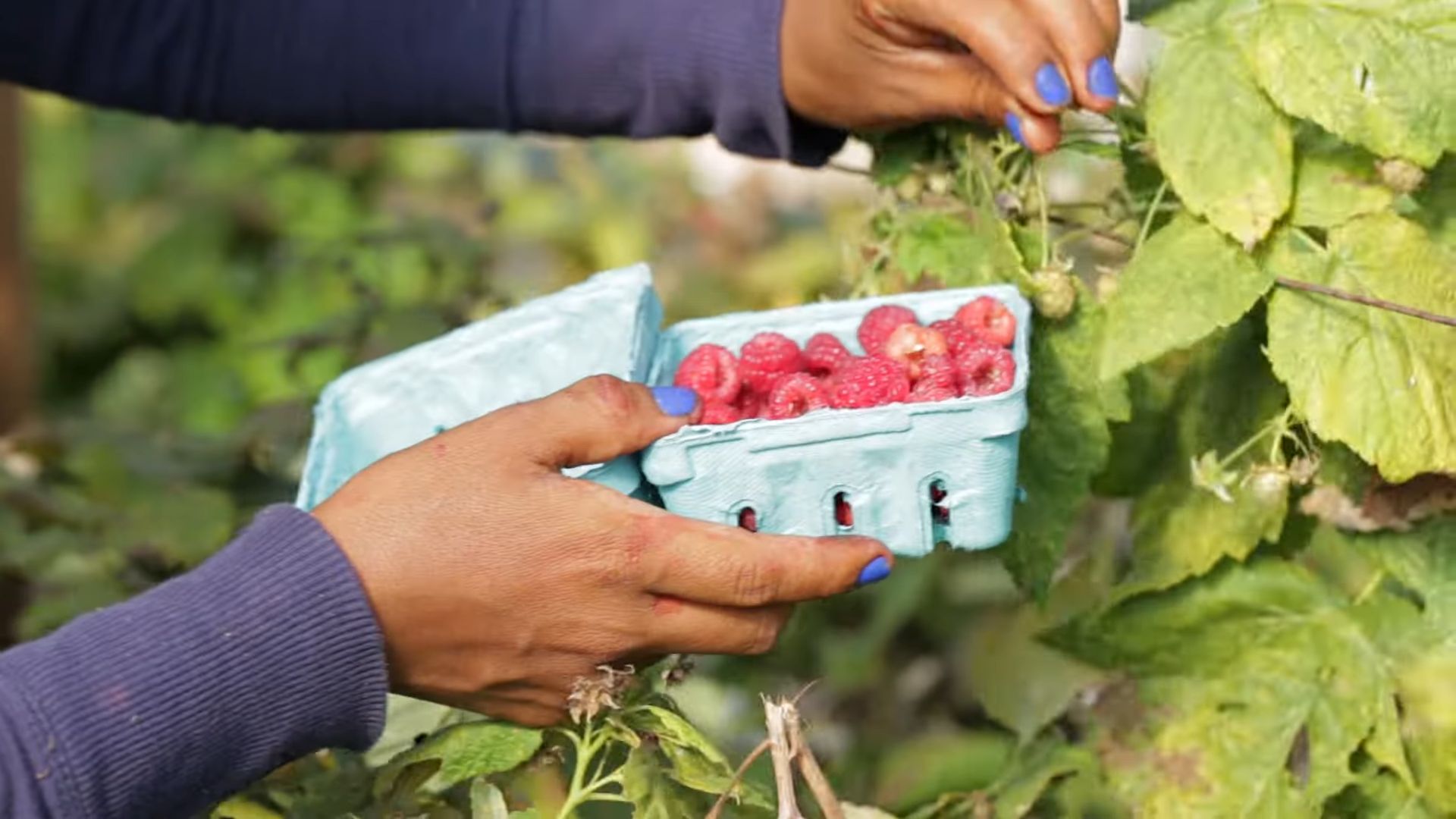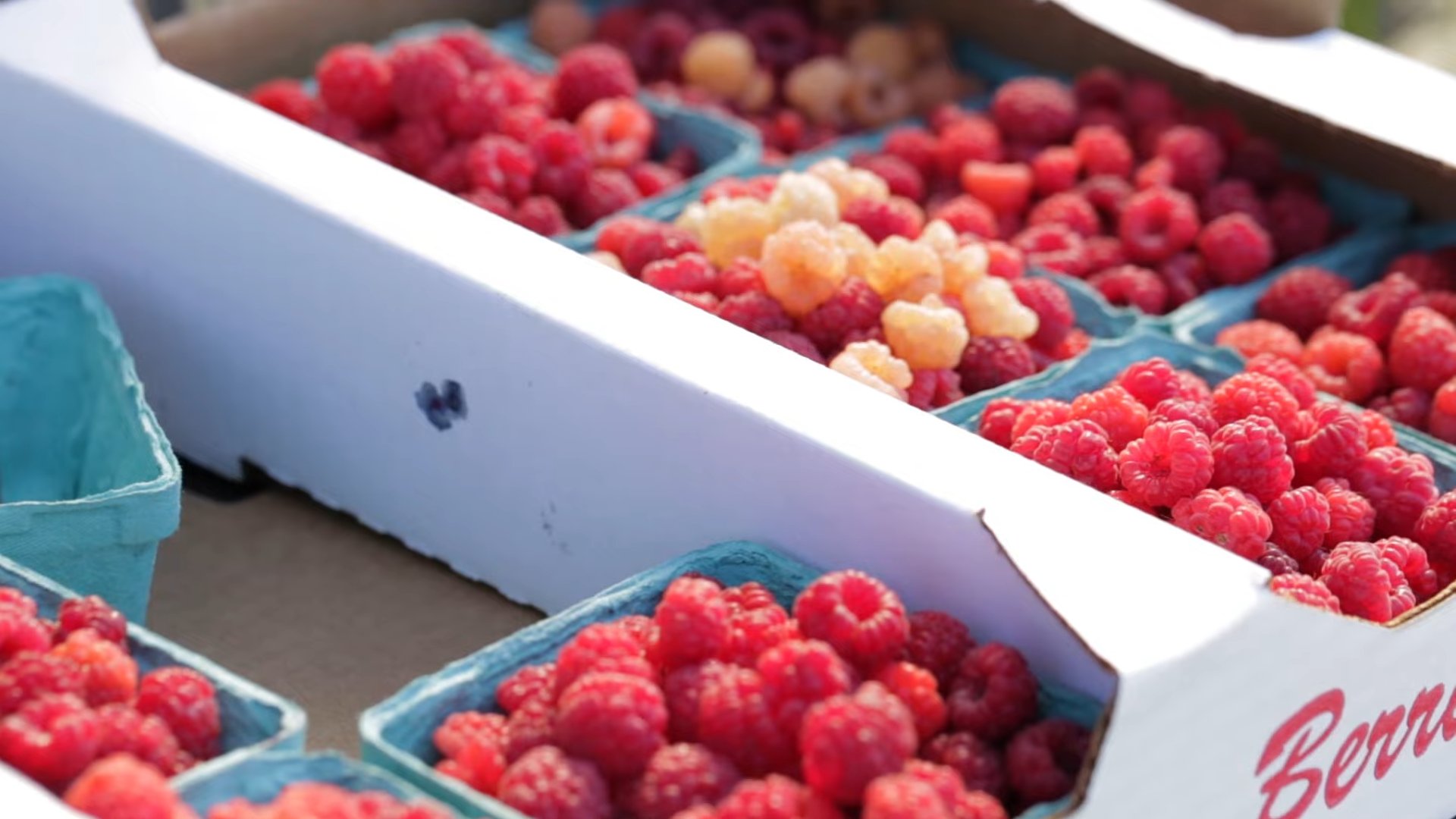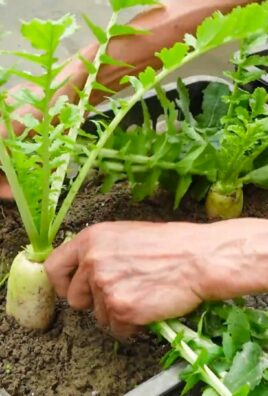Grow Raspberries at Home – imagine plucking juicy, sun-ripened raspberries straight from your own backyard! Forget those expensive, often lackluster berries from the grocery store. This isn’t just a dream; it’s an achievable reality with a few simple tricks and a little DIY spirit. For centuries, raspberries have been cherished, not only for their delicious flavor but also for their medicinal properties. From ancient Roman gardens to medieval monastery plots, these vibrant berries have held a special place in human history and cuisine.
But why should you bother learning to grow raspberries at home? Well, beyond the obvious benefit of having a readily available supply of fresh, organic fruit, it’s incredibly rewarding! Plus, let’s be honest, who doesn’t love a good DIY project that ends with a tasty treat? I’m here to guide you through the process, sharing easy-to-follow tips and hacks that will have you harvesting your own bountiful raspberry crop in no time. Whether you have a sprawling garden or just a small patio, I’ll show you how to make it happen. Get ready to unleash your inner gardener and enjoy the sweet taste of success!

Growing Raspberries: Your Ultimate DIY Guide to a Bountiful Harvest
Hey there, fellow gardening enthusiasts! Ever dreamed of plucking juicy, sun-ripened raspberries straight from your own backyard? Well, dream no more! Growing raspberries at home is totally achievable, even if you’re a beginner. I’m going to walk you through everything you need to know, from choosing the right variety to harvesting your delicious bounty. Let’s get started!
Choosing the Right Raspberry Variety
First things first, you need to pick the perfect raspberry variety for your climate and space. There are two main types:
* Everbearing (or Fall-Bearing) Raspberries: These guys produce fruit on the current year’s canes in the late summer or fall. You can even get two crops – a smaller one in the summer on the previous year’s canes, followed by a larger one in the fall.
* Summer-Bearing Raspberries: These produce one large crop in the summer on the previous year’s canes.
Consider these factors when making your choice:
* Your Climate: Some varieties are more cold-hardy than others. Check the plant’s hardiness zone to make sure it’s suitable for your area.
* Your Space: Raspberries can spread, so consider how much room you have. Some varieties are more compact than others.
* Your Taste Preferences: Do you prefer sweet or tart raspberries? Research different varieties to find one that suits your palate.
Some popular varieties include:
* ‘Heritage’ (Everbearing): A reliable and productive everbearing variety.
* ‘Autumn Bliss’ (Everbearing): Another great everbearing option, known for its large, flavorful berries.
* ‘Boyne’ (Summer-Bearing): A very cold-hardy summer-bearing variety.
* ‘Meeker’ (Summer-Bearing): A popular summer-bearing variety with excellent flavor.
Preparing Your Raspberry Patch
Raspberries thrive in well-drained, slightly acidic soil (pH 6.0-6.5). Here’s how to prepare your planting area:
1. Choose a Sunny Location: Raspberries need at least 6-8 hours of sunlight per day.
2. Test Your Soil: A soil test will tell you the pH and nutrient levels of your soil. You can get a soil test kit at most garden centers or send a sample to your local agricultural extension office.
3. Amend the Soil: Based on your soil test results, amend the soil with compost, well-rotted manure, or other organic matter to improve drainage and fertility. If your soil is too alkaline, you can add sulfur to lower the pH.
4. Clear the Area: Remove any weeds, grass, rocks, or other debris from the planting area.
5. Consider a Raised Bed: If your soil is poorly drained, consider planting your raspberries in a raised bed. This will improve drainage and prevent root rot.
Planting Your Raspberry Canes
Now for the fun part – planting!
1. Timing is Key: Plant raspberry canes in early spring or late fall, when the plants are dormant.
2. Spacing: Space summer-bearing raspberries 2-3 feet apart in rows that are 8-10 feet apart. Everbearing raspberries can be spaced closer together, about 1.5-2 feet apart in rows that are 6-8 feet apart.
3. Dig the Holes: Dig holes that are wide and deep enough to accommodate the root systems of the raspberry canes.
4. Plant the Canes: Gently remove the raspberry canes from their containers and loosen the roots. Place the canes in the holes, making sure the top of the root ball is level with the surrounding soil.
5. Backfill the Holes: Fill the holes with soil and gently firm it around the canes.
6. Water Thoroughly: Water the newly planted canes thoroughly to help settle the soil and encourage root growth.
7. Mulch: Apply a layer of mulch around the base of the plants to help retain moisture, suppress weeds, and regulate soil temperature. Use organic mulch such as straw, wood chips, or shredded leaves.
Caring for Your Raspberry Plants
Raspberries need regular care to thrive and produce a bountiful harvest.
* Watering: Raspberries need consistent moisture, especially during dry periods. Water deeply and regularly, especially when the plants are flowering and fruiting. Aim for about 1-2 inches of water per week.
* Fertilizing: Fertilize your raspberry plants in early spring with a balanced fertilizer, such as 10-10-10. Follow the instructions on the fertilizer package. You can also side-dress the plants with compost or well-rotted manure.
* Weeding: Keep the area around your raspberry plants free of weeds. Weeds compete with the raspberries for water and nutrients. Hand-pull weeds or use a hoe to remove them.
* Pruning: Pruning is essential for maintaining healthy and productive raspberry plants. The pruning techniques differ slightly depending on whether you have summer-bearing or everbearing raspberries.
* Summer-Bearing Raspberries: After the summer harvest, prune out the canes that fruited, cutting them back to the ground. These canes will not produce fruit again. Leave the new, green canes that grew during the summer. These will produce fruit next year.
* Everbearing Raspberries: If you want two crops, prune out only the tips of the canes that fruited in the fall after the harvest. This will encourage the remaining portion of the cane to produce a summer crop. After the summer crop, prune out the entire cane to the ground. If you only want one large fall crop, prune all the canes to the ground in late winter or early spring. This will encourage the plants to produce more canes and a larger fall harvest.
* Support: Raspberry canes can become heavy with fruit and may need support. You can use a trellis, wires, or stakes to support the canes.
* Pest and Disease Control: Raspberries can be susceptible to various pests and diseases. Monitor your plants regularly and take action if you notice any problems. Common pests include aphids, spider mites, and Japanese beetles. Common diseases include cane blight, anthracnose, and root rot. Use organic pest control methods whenever possible.
Dealing with Common Raspberry Problems
Even with the best care, you might encounter some common raspberry problems. Here’s how to tackle them:
* Yellow Leaves: This could indicate a nutrient deficiency, especially iron. Amend the soil with iron chelate or compost. It could also be a sign of overwatering or poor drainage.
* Lack of Fruit: Insufficient sunlight, poor pollination, or improper pruning can all lead to a lack of fruit. Make sure your plants are getting enough sunlight, consider hand-pollinating the flowers, and prune correctly.
* Cane Dieback: This is often caused by fungal diseases like cane blight. Remove and destroy infected canes. Improve air circulation by thinning out the plants.
* Pests: Identify the pest and use appropriate organic pest control methods. Insecticidal soap, neem oil, and diatomaceous earth can be effective against many common raspberry pests.
Harvesting Your Raspberries
The moment you’ve been waiting for!
1. Timing: Raspberries are ready to harvest when they are fully colored, plump, and easily pull away from the stem.
2. Gentle Handling: Raspberries are delicate, so handle them gently. Pick them in the morning when they are cool and dry.
3. Storage: Store raspberries in the refrigerator for up to a few days. You can also freeze them for longer storage. Spread the raspberries out on a baking sheet and freeze them individually. Once frozen, transfer them to a freezer bag or container.
Propagating Your Raspberry Plants
Want more raspberry plants? You can easily propagate them!
* Suckers: Raspberries naturally produce suckers, which are new shoots that emerge from the roots. Dig up the suckers in the spring or fall and transplant them to a new location.
* Tip Layering: In late summer, bend a cane down to the ground and bury the tip in the soil. Weigh it down with a rock or brick. The tip will root over the winter. In the spring, cut the cane from the parent plant and transplant the new plant.
Raspberry Trellis System
A trellis system is highly recommended for raspberry plants, especially for summer-bearing varieties that can grow quite tall. It provides support, improves air circulation, and makes harvesting easier. Here’s a simple DIY trellis system you can build:
1. Materials: You’ll need wooden posts (4×4 or 6×6), wire (heavy-gauge), staples or wire clips, and a hammer or staple gun.
2. Install Posts: Drive the posts into the ground at the ends of your raspberry row and every 8-10 feet in between. Make sure the

Conclusion
So, there you have it! Growing raspberries at home is not only achievable, but it’s also incredibly rewarding. Imagine stepping out into your garden and picking plump, juicy raspberries, bursting with flavor, whenever you crave them. Forget those expensive, often lackluster berries from the grocery store. With a little patience and the right techniques, you can cultivate your own personal raspberry patch, providing you with a continuous supply of delicious fruit for years to come.
This DIY approach to growing raspberries offers several compelling advantages. First and foremost, you have complete control over the growing process. You can choose organic methods, ensuring your raspberries are free from harmful pesticides and chemicals. Secondly, you’ll save money in the long run. While there’s an initial investment in plants and supplies, the ongoing cost is significantly lower than buying raspberries regularly. And finally, there’s the sheer satisfaction of nurturing something from a small plant to a thriving, fruit-bearing bush.
But the benefits don’t stop there. Growing raspberries at home is also a fantastic way to connect with nature, learn about gardening, and even get some exercise. It’s a hobby that can be enjoyed by the whole family, teaching children about where their food comes from and fostering a love for the outdoors.
Ready to take your raspberry growing to the next level? Consider experimenting with different varieties of raspberries to find your favorites. Explore everbearing varieties for a longer harvest season, or try growing different colored raspberries, such as golden or black raspberries, for a unique twist. You can also experiment with different trellising methods to maximize your yield and create a visually appealing garden feature.
Don’t be afraid to get creative and adapt these techniques to suit your specific climate and growing conditions. Remember, gardening is a learning process, and there’s always something new to discover.
We wholeheartedly encourage you to give this DIY trick a try. Start small, learn as you go, and don’t be discouraged by initial setbacks. The rewards of fresh, homegrown raspberries are well worth the effort.
And most importantly, we want to hear about your experiences! Share your successes, your challenges, and your tips in the comments below. Let’s create a community of raspberry enthusiasts, helping each other grow the best raspberries possible. Let us know what variety of raspberry you chose to grow at home, and if you have any special tips for growing raspberries at home. Happy gardening!
Frequently Asked Questions (FAQ)
What is the best time of year to plant raspberries?
The best time to plant raspberries depends on your climate and the type of raspberry you’re planting. In general, fall or early spring are the ideal times. Fall planting allows the plants to establish their roots before winter, giving them a head start in the spring. Spring planting should be done as soon as the ground is workable. For bare-root raspberries, spring planting is often preferred. Container-grown raspberries can be planted throughout the growing season, provided you water them regularly.
What kind of soil do raspberries need?
Raspberries thrive in well-drained, slightly acidic soil with a pH between 6.0 and 6.8. They prefer soil that is rich in organic matter. Before planting, amend your soil with compost, well-rotted manure, or other organic materials to improve drainage and fertility. Avoid planting in heavy clay soil, as this can lead to root rot. If your soil is heavy clay, consider planting in raised beds or containers.
How much sunlight do raspberries need?
Raspberries need at least six to eight hours of direct sunlight per day to produce a good crop of fruit. Choose a planting location that receives full sun, especially during the morning hours. Morning sun helps to dry the foliage, reducing the risk of fungal diseases. If you live in a hot climate, some afternoon shade may be beneficial to prevent the plants from getting scorched.
How often should I water my raspberry plants?
Raspberry plants need consistent moisture, especially during the growing season and when the fruit is developing. Water deeply and regularly, aiming to keep the soil consistently moist but not waterlogged. The frequency of watering will depend on your climate, soil type, and the age of the plants. Young plants need more frequent watering than established plants. Check the soil moisture regularly and water when the top inch or two feels dry. During dry spells, you may need to water daily.
Do I need to prune my raspberry plants?
Yes, pruning is essential for maintaining healthy and productive raspberry plants. The pruning method depends on the type of raspberry you’re growing (everbearing or summer-bearing). Summer-bearing raspberries produce fruit on the previous year’s canes, so prune these canes to the ground after they have fruited. Everbearing raspberries produce fruit on the top portion of the current year’s canes. You can either prune the top portion of the canes after fruiting to encourage a second crop lower down, or prune all the canes to the ground in late winter or early spring for a single, larger crop. Regular pruning helps to improve air circulation, reduce the risk of disease, and encourage new growth.
What are some common pests and diseases that affect raspberries?
Raspberries can be susceptible to several pests and diseases, including aphids, spider mites, raspberry cane borers, raspberry fruitworms, and fungal diseases like anthracnose and cane blight. Regularly inspect your plants for signs of pests or diseases. Use organic pest control methods, such as insecticidal soap or neem oil, to control pests. To prevent fungal diseases, ensure good air circulation, avoid overhead watering, and prune away any infected canes.
Can I grow raspberries in containers?
Yes, you can successfully grow raspberries in containers, especially if you have limited space. Choose a large container (at least 15-20 gallons) with good drainage. Use a high-quality potting mix and amend it with compost or other organic matter. Select a dwarf or compact raspberry variety that is well-suited for container growing. Water regularly and fertilize as needed. Container-grown raspberries may need more frequent watering and fertilization than those grown in the ground.
How long does it take for raspberry plants to produce fruit?
Raspberry plants typically start producing fruit in their second year after planting. However, some everbearing varieties may produce a small crop in their first year. The amount of fruit will increase as the plants mature. With proper care, raspberry plants can continue to produce fruit for many years.
What are some good companion plants for raspberries?
Several plants can benefit raspberries when planted nearby. Garlic and onions can help to deter pests. Chamomile and marigolds can attract beneficial insects. Herbs like thyme and oregano can help to improve soil health. Avoid planting raspberries near tomatoes, potatoes, or eggplants, as these plants can harbor diseases that can affect raspberries.
How do I harvest raspberries?
Raspberries are ready to harvest when they are plump, deeply colored, and easily pull away from the core. Gently grasp the berry and pull it away from the plant. Avoid squeezing the berries, as they are delicate and can bruise easily. Harvest raspberries regularly, as they ripen quickly. Store harvested raspberries in the refrigerator and use them within a few days.





Leave a Comment